Harishyam Arts Blog
Shardiya Navratri 2024 Day 6 Maa Katyayani Significance, Muhrat, Appearance, Puja Samagri, Vidhi, Katha, Aarti | चैत्र नवरात्रि 2025 दिन 6 मां कात्यायनी, जानिए पूजा विधि, महत्व, मुहर्त, स्वरूप, पूजा सामग्री, विधि, कथा, मंत्र, आरती
By Lakshay Sharma | On 14 September, 2024 | Views

Day 6 of Shardiya Navratri is dedicated to the fierce and powerful form of Goddess Durga, Maa Katyayani. Known as the warrior goddess, Maa Katyayani represents courage, strength, and the destruction of evil forces. Devotees worship her to overcome obstacles, achieve victory, and fulfill desires, especially in matters of marriage and relationships.
In this blog, we will uncover the significance, muhurat, appearance, puja samagri, vidhi, katha, and aarti for Maa Katyayani during Shardiya Navratri 2025, and how invoking her blessings can bring protection and prosperity into one's life.
Date of the 6th Day of Navratri 2025: 27th September 2025
Goddess of the Day: Maa Katyayani
Color of the Day: Royal Blue
Flower of the Day: Marigold
Sweet / Prasadam of the Day: Honey
Other Name: Adi Parashakti
Importance: She signifies intelligence and peace
Who is Maa Katyayani ? | कौन हैं मां कात्यायनी ?
Maa Katyayani is one of the nine forms of the Hindu goddess Durga worshipped during the Navratri festival. She is known for her fierce and protective nature and is celebrated on the sixth day of Navratri.
Maa Katyayani is named after the sage Katyayana, who performed intense penance to obtain a powerful deity as his daughter. Pleased with his devotion, the goddess Durga manifested herself as Katyayani to fulfill his wish. She is revered as a warrior goddess who combats evil forces and protects her devotees.
Maa Katyayani is depicted with a radiant and fierce appearance, often shown with four or more arms, holding various weapons and symbols of power. She is usually seen riding a lion, symbolizing courage and strength. Her appearance reflects her warrior-like nature and her role as a destroyer of evil.
Maa Katyayani is associated with purity, strength, and valor. Devotees believe that worshipping her can help overcome obstacles, fulfill desires, and gain protection from adversities. She is particularly worshipped by those seeking relief from difficulties or looking to achieve success in their endeavors.
During Navratri, Maa Katyayani is worshipped with fervor, especially on the sixth day. Devotees offer flowers, fruits, and sweets to her, perform special prayers, and recite hymns and mantras dedicated to her. Her worship is believed to bring about positive changes in life and provide divine protection.
Appearance of Maa Katyayani
Maa Katyayani, the sixth form of Goddess Durga, is revered as a fierce and powerful deity, symbolizing strength and courage. Her appearance is radiant and divine, emphasizing her role as a warrior goddess. Here are the key aspects of her depiction:
Maa Katyayani, the sixth form of Goddess Durga, is revered as a fierce and powerful deity, symbolizing strength and courage. Her appearance is radiant and divine, emphasizing her role as a warrior goddess. Here are the key aspects of her depiction:
- Complexion and Aura: Maa Katyayani is often depicted with a bright, golden or radiant complexion, symbolizing her divine and majestic nature.
- Arms: She is typically portrayed with four or more arms. In her hands, she holds various weapons and symbols, each representing different aspects of her power and protection:
- A sword (representing strength and valor).
- A lotus (symbolizing purity and wisdom).
- A trident (trishul) (denoting destruction of evil).
- A shield or bow (for defense and battle readiness). Some depictions may also include a mace (gada), symbolizing authority and power.
- Vahana (Vehicle): Maa Katyayani rides a lion or tiger, which represents bravery, strength, and her ability to defeat powerful enemies.
- Crown and Adornments: She wears a crown with radiant light, symbolizing her sovereignty. She is often adorned with beautiful jewelry, signifying her divine wealth and status as a goddess.
- Facial Expression: Her face exudes a serene but fierce determination, reflecting both her compassionate nature and her readiness to destroy evil forces.
Maa Katyayani's appearance embodies the ideal of divine power and protection, making her a beloved and awe-inspiring form of the goddess during Navratri.
Navratri 2025 Day 6 Significance
On the sixth day of Navratri 2024, devotees worship Maa Katyayani, the sixth form of Goddess Durga. Maa Katyayani represents the warrior aspect of the goddess and symbolizes courage, strength, and victory over evil. She is depicted riding a lion, holding a sword in one hand and a lotus in another, signifying both power and compassion.
This day holds immense significance for those seeking inner strength, balance, and the power to overcome obstacles. Devotees believe that worshiping Maa Katyayani can help remove personal struggles and fulfill desires, particularly related to relationships and marriage.
Fasting, chanting mantras like the Katyayani mantra, and performing special prayers are common practices on this day.
Navratri Day 6 Puja Samagri List | नवरात्रि दिवस 6 पूजा सामग्री सूची
On the sixth day of Navratri, devotees worship Maa Katyayani with specific offerings and items. Here's a detailed list of the Puja Samagri (पूजा सामग्री) required for Day 6 of Navratri:
- Kalash (कलश) – A sacred copper or brass pot filled with water, mango leaves, and coconut.
- Maa Katyayani's Idol or Picture (मां कात्यायनी की मूर्ति या चित्र) – A representation of the goddess for worship.
- Red Cloth (लाल वस्त्र) – Maa Katyayani is associated with the color red, symbolizing strength and valor.
- Sandalwood Paste (चंदन) – For applying tilak on the idol or picture.
- Roli (रोलि) / Kumkum (कुमकुम) – Red vermilion powder for applying on the goddess and participants.
- Akshat (अक्षत) – Unbroken rice grains mixed with turmeric or plain.
- Flowers (फूल) – Red and yellow flowers are considered auspicious for Maa Katyayani. Lotus or rose flowers are preferred.
- Garland (माला) – Made of fresh flowers or leaves to offer to the goddess.
- Incense Sticks (अगरबत्ती) – For creating a divine fragrance during the puja.
- Diya (दीपक) – An oil lamp made of clay or brass, lit with ghee or oil.
- Ghee or Oil (घी या तेल) – For lighting the diya.
- Dhoop (धूप) – To create aromatic smoke, enhancing the atmosphere of devotion.
- Camphor (कपूर) – Burned during the aarti for purification and devotion.
- Naivedya (नैवेद्य) – Food offerings such as sweets (ladoo, kheer), fruits, and dry fruits.
- Paan (पान) – Betel leaves offered during the puja.
- Cloves and Cardamom (लौंग और इलायची) – These are often included in the offering.
- Coconut (नारियल) – Offered as part of the kalash or separately to the goddess.
- Durva Grass (दूर्वा घास) – Used in various Hindu rituals as a sacred offering.
- Panchamrit (पंचामृत) – A mixture of milk, honey, curd, ghee, and sugar.
- Prasad (प्रसाद) – Sacred offerings for distribution among devotees after the puja.
- Holy Water (गंगा जल) – Used for purification during the puja.
- New Clothes or Sari for the Goddess (नव वस्त्र) – To offer to Maa Katyayani as a symbol of devotion.
Additional Items:
- Bell (घंटी) – Rung during the aarti to invoke the goddess’s blessings.
- Mantra Book (मंत्र पुस्तक) – For reciting the mantras dedicated to Maa Katyayani.
- Aarti Thali (आरती थाली) – A plate for performing the aarti with diya, incense, and other offerings.
By gathering and using these items with devotion, devotees seek Maa Katyayani’s blessings for protection, success, and fulfillment of desires.
Maa Katyayani Puja Vidhi | माँ कात्यायनी पूजा विधि
Maa Katyayani is worshipped on the sixth day of Navratri, and her puja is performed with devotion and specific rituals. Here's a step-by-step guide to the Maa Katyayani Puja Vidhi:
1. Preparation for the Puja:
- Purification: Begin by cleaning the puja area and purifying yourself with a bath. Sprinkle Gangajal (holy water) around the puja space to purify the environment.
- Kalash Sthapana: Place a Kalash (sacred pot) filled with water, a few mango leaves, and a coconut on the top. Decorate it with a red cloth or thread. This represents the goddess’s presence.
2. Placement of the Deity:
- Place the idol or picture of Maa Katyayani on a clean altar. Decorate the idol with a red or yellow cloth, as these colors are considered auspicious for Maa Katyayani.
- Offer flowers, preferably red roses or lotuses, to the goddess as she is associated with valor and purity.
3. Sankalpa (संकल्प) – Taking a Vow:
- Sit in front of the deity and take a Sankalpa (vow). Offer water, flowers, and akshat (rice) in your right hand while stating your intentions for the puja. Pray for Maa Katyayani’s blessings for protection, courage, and success in your endeavors.
4. Dhyan (ध्यान) – Meditating on Maa Katyayani:
- Close your eyes and meditate on the form of Maa Katyayani. Visualize her as a radiant, powerful warrior goddess riding a lion, holding her weapons, and exuding divine energy.
- Chant the Maa Katyayani Dhyan Mantra to focus your mind:
चन्द्रहासोज्ज्वलकरा शार्दूलवरवाहना।
कात्यायनी शुभं दद्याद्देवी दानवघातिनी॥
5. Offering Puja Samagri (पूजा सामग्री):
- Tilak (तिलक): Apply sandalwood paste and kumkum on the idol or picture of Maa Katyayani.
- Akshat (अक्षत): Offer unbroken rice grains to the goddess as a symbol of completeness.
- Flowers and Garland (फूल और माला): Offer fresh flowers and garlands to Maa Katyayani.
- Incense and Dhoop (अगरबत्ती और धूप): Light incense sticks and dhoop to create a divine atmosphere.
- Diya (दीपक): Light an oil or ghee lamp in front of the deity.
- Naivedya (नैवेद्य): Offer fruits, sweets (ladoo, kheer), and other food items as prasad.
- Betel Leaves and Areca Nuts (पान और सुपारी): Offer betel leaves and areca nuts as part of the traditional puja.
6. Chanting Maa Katyayani Mantras:
- Recite the Maa Katyayani mantra to invoke her blessings
- You can also chant the Katyayani Vrat Mantra if seeking a specific wish, especially for marriage or overcoming obstacles:
7. Aarti (आरती):
- Perform the Aarti of Maa Katyayani using a thali (plate) with a lit diya, incense sticks, and flowers. Sing the aarti song dedicated to the goddess and wave the thali in a circular motion in front of her idol.
8. Offering Bhog (भोग):
- After the aarti, offer the prasad to the goddess. You can include sweets, fruits, and dry fruits. Once the offering is complete, share the prasad with all family members.
9. Prarthana (प्रार्थना) – Final Prayer:
- Offer your final prayers to Maa Katyayani, asking for her blessings for protection, success, and removal of obstacles in life.
- Thank her for her presence and for bestowing her divine blessings upon you and your family.
10. Distribution of Prasad:
- Once the puja is complete, distribute the prasad to everyone present, symbolizing the sharing of the goddess’s blessings.
By following this simple yet profound puja vidhi, devotees can invoke the powerful presence of Maa Katyayani, seeking her protection, strength, and guidance in their lives.
Navratri Day 6 Maa Katyayani ki Katha | माँ कात्यायनी की कथा
नवरात्रि के छठे दिन माँ कात्यायनी की पूजा की जाती है। माँ कात्यायनी देवी दुर्गा की छठी रूप हैं और उनकी पूजा विशेष रूप से शक्ति, वीरता और साहस की प्रतीक मानी जाती है। उनकी कथा भी अत्यंत प्रेरणादायक और महत्वपूर्ण है।
कथा:
प्राचीन काल में एक प्रसिद्ध ऋषि कात्यायन हुए, जो महान तपस्वी और भक्त थे। उन्होंने अपने तप और भक्ति के माध्यम से भगवान से एक दिव्य कन्या की प्राप्ति की इच्छा की। कात्यायन की तपस्या और भक्ति देखकर भगवान ने यह इच्छा स्वीकार कर ली और देवी दुर्गा ने कात्यायन के घर एक पुत्री के रूप में जन्म लिया।
इस कन्या का नाम माँ कात्यायनी रखा गया। माँ कात्यायनी का स्वरूप अत्यंत भव्य और शक्तिशाली था। उनकी उपस्थिति से ही कात्यायन आश्चर्यचकित और प्रसन्न हो गए। माँ कात्यायनी ने अपने भव्य रूप और दिव्य शक्तियों से देवताओं और ऋषियों को प्रभावित किया।
एक समय राक्षसों ने देवताओं और ब्रह्मा, विष्णु, और शिव को परेशान कर दिया। वे राक्षस अत्यंत शक्तिशाली और विनाशकारी थे। इन राक्षसों के आतंक को समाप्त करने के लिए देवी दुर्गा ने अपनी शक्ति से माँ कात्यायनी का अवतार लिया। माँ कात्यायनी ने अपनी भयंकर शक्ति और साहस से राक्षसों का संहार किया और उन्हें नष्ट कर दिया।
माँ कात्यायनी के इस विजय के बाद वे न केवल भक्तों के लिए सुरक्षा और आश्रय की प्रतीक बन गईं, बल्कि उनके नाम की जयकार भी हर जगह होने लगी। उनकी पूजा से भक्तों को हर प्रकार के संकट और समस्याओं से मुक्ति मिलती है और उन्हें विजय प्राप्त होती है।
इस प्रकार माँ कात्यायनी का अवतार और उनके द्वारा किए गए महान कार्य भक्तों के लिए प्रेरणा का स्रोत हैं। माँ कात्यायनी की पूजा करने से व्यक्ति की सारी समस्याएं समाप्त होती हैं और जीवन में खुशहाली और समृद्धि आती है।
इस दिन माँ कात्यायनी की पूजा विशेष उत्साह और श्रद्धा के साथ की जाती है। भक्त माँ कात्यायनी की आराधना करके उनके आशीर्वाद की प्राप्ति की कामना करते हैं।
Maa Katyayani Mantra | माँ कात्यायनी मंत्र
Main Mantra
- या देवी सर्वभूतेषु माँ कात्यायनी रूपेण संस्थिता।नमस्तस्यै नमस्तस्यै नमस्तस्यै नमो नमः॥
- Transliteration: Ya Devi Sarvabhuteshu Maa Katyayani Rupena Samsthita |Namastasyai Namastasyai Namastasyai Namo Namah ||
- Meaning: Salutations to the goddess who manifests as Maa Katyayani in all beings. Salutations to her, salutations to her, salutations to her again and again.
Vrat Mantra
- कात्यायनी महामाये महायोगिन्यधीश्वरि।नन्दगोपसुतं देवि पतिं मे कुरु ते नमः॥
- Transliteration: Katyayani Mahamaye Mahayoginyadhishvari |Nandagopasutam Devi Patim Me Kuru Te Namah ||
- Meaning: O Katyayani, great goddess, supreme yogini, and goddess of all knowledge, please grant me the boon of marrying the son of Nandagopa (Krishna). Salutations to you.
Katyayani Mata Ji Ki Aarti Lyrics in Hindi | कात्यायनी माता जी की आरती
जय कात्यायनी माँ, जय कात्यायनी माँ,
संकट हरनी माता, जय कात्यायनी माँ।
श्वेतपद्मधरनी, महाक्रूरी, बाणधारणी,
धारिणी रत्नजटिला, जय कात्यायनी माँ।
लक्ष्मी-सरस्वती-रूपिणी, शक्तिधारिणी भवानी,
दुर्गा-चंडिका-रूपिणी, जय कात्यायनी माँ।
सुरनर मुनिवर पूजा, सेवार्थी पूजनी,
स्वयं प्रकट रजनी, जय कात्यायनी माँ।
शिव-पार्वती-रूपिणी, शंकर-सखा चित्तेश्वरी,
महिमा सरितिनी ममता, जय कात्यायनी माँ।
हे कात्यायनी माता, सब पर कृपा कीजिए,
विघ्न हरनी माता, जय कात्यायनी माँ।
कात्यायनी पूजा से जुड़े सामान्य प्रश्न
प्रश्न 1: कात्यायनी माता को क्या चढ़ाया जाता है?
उत्तर: कात्यायनी माता को गुड़ और शहद का भोग विशेष रूप से चढ़ाया जाता है। यह माना जाता है कि इन सामग्रियों से मां प्रसन्न होती हैं और अपने भक्तों को शारीरिक और मानसिक शक्ति प्रदान करती हैं। इसके अलावा, भक्त माता को लाल फूल, नारियल, और सुगंधित धूप भी अर्पित करते हैं।
प्रश्न 2: मां कात्यायनी की सवारी क्या है?
उत्तर: मां कात्यायनी की सवारी शेर है, जो शक्ति और साहस का प्रतीक है। शेर पर विराजमान कात्यायनी माता अपने भक्तों को साहस और निर्भीकता का संदेश देती हैं। यह दर्शाता है कि वे असुरों और बुराई का नाश करने के लिए सदैव तैयार हैं।
प्रश्न 3: कात्यायनी माता किसकी कुलदेवी थी?
उत्तर: कात्यायनी माता यदुवंशियों की कुलदेवी मानी जाती हैं। भगवान श्रीकृष्ण की उपासना करने वाले यदुवंशी, विशेष रूप से मां कात्यायनी की पूजा करते थे। पुराणों के अनुसार, गोपियों ने भी श्रीकृष्ण को पति रूप में पाने के लिए कात्यायनी माता की आराधना की थी।
प्रश्न 4: मां कात्यायनी किसका प्रतीक है?
उत्तर: मां कात्यायनी शक्ति, साहस, और विजय का प्रतीक हैं। वह दुर्गा के छठे स्वरूप के रूप में जानी जाती हैं, जो बुराई का नाश करके धर्म की स्थापना करती हैं। उनका स्वरूप युद्ध और रक्षा का प्रतिनिधित्व करता है, जो भक्तों को संकटों से उबारता है।
प्रश्न 5: कात्यायनी का अर्थ क्या होता है?
उत्तर: कात्यायनी नाम 'कात्य' ऋषि के नाम से जुड़ा है। पुराणों के अनुसार, कात्यायनी माता का जन्म महर्षि कात्य के घर हुआ था, इसलिए उन्हें कात्यायनी कहा जाता है। इस नाम का अर्थ होता है "कात्य ऋषि की कन्या" या "कात्य के वंश में जन्मी देवी।
Conclusion
On Day 6 of Shardiya Navratri, the worship of Maa Katyayani holds immense significance as she embodies strength, courage, and purity. Her appearance and divine qualities are deeply revered, and the puja performed on this day aims to invoke her blessings for personal growth and protection from adversities. By following the prescribed muhurat, preparing the necessary puja samagri, and performing the rituals with devotion, devotees can seek Maa Katyayani’s grace and blessings.
If you wish to enhance your Navratri celebrations, consider adding a touch of elegance to your worship space with a beautifully crafted marble statue of Maa Katyayani. At Harishyam Arts, we offer exquisite marble statues that capture the essence of Maa Katyayani, bringing a divine presence to your home. Explore our collection to find the perfect statue that resonates with your devotion.
Day 6 of Shardiya Navratri is dedicated to the fierce and powerful form of Goddess Durga, Maa Katyayani. Known as the warrior goddess, Maa Katyayani represents courage, strength, and the destruction of evil forces. Devotees worship her to overcome obstacles, achieve victory, and fulfill desires, especially in matters of...

Lakshay Sharma
I’m Lakshay Sharma, a writer with a deep passion for Hindu mythology, Vastu Shastra, and home interiors. I enjoy exploring the rich traditions of Hindu gods and goddesses, sharing insights into Vastu principles, and offering guidance on creating sacred spaces like Puja Mandirs. Through my writing, I aim to inspire harmony and spiritual well-being, blending traditional knowledge with modern perspectives.
Harishyam Arts | Jaipur
Related Blogs

Is It Okay to Hang a Mandir on a Wall? A Complete Guide to Wall-Mounted Temples
Lakshay Sharma | November 23, 2025
In today’s fast-paced world, where urban homes are becoming more compact and s...
Read More...
Who is Parashvanath? The Life and Legacy of Jainism’s 23rd Tirthankara
Lakshay Sharma | November 22, 2025
Faith and spirituality are cornerstones of Indian tradition, and Jainism stand...
Read More...
How to Choose Between Carved and Minimalistic Wooden Mandirs
Lakshay Sharma | November 21, 2025
A home mandir (temple) is far more than just a piece of furniture; it is the s...
Read More...
How to clean silver god idols at home
Lakshay Sharma | November 21, 2025
At Harishyam Arts, we understand the spiritual and aesthetic significance of s...
Read More...
Are Marble Dust Statues Ideal for Your Home Temple? Pros & Cons
Lakshay Sharma | November 19, 2025
When it comes to selecting statues for your home temple, marble dust statues h...
Read More...
Where to Buy Authentic Marble Gods' Moortis in the USA: A Guide for Devotees and Collectors
Lakshay Sharma | November 19, 2025
For devotees and collectors in the USA seeking authentic marble Hindu god moor...
Read More...
Maa Parvati 108 Names in Sanskrit and English: Their Significance, Meaning, and Mantra Power
Lakshay Sharma | November 17, 2025
The Divine Essence of Maa Parvati
Maa Parvati,...
Read More...
8 Guidelines for Setting Up Your Home Mandir with Wooden Murtis: Location, Selection, and Maintenance.
Lakshay Sharma | November 16, 2025
Introduction: The Divine Mother of Strength and Compassion

Who Was Jain Mahavir? The Life, Teachings, and Legacy of the 24th Tirthankara
Lakshay Sharma | November 15, 2025
Lord Mahavir, the 24th Tirthankara of Jainism, was a spiritual reformer who re...
Read More...
Benefits of Choosing Corian Mandirs Over Marble and Wood
Lakshay Sharma | November 14, 2025
Modern homes today demand elegance, functionality, and easy upkeep — and Coria...
Read More...
White vs. Black Shivling: Which One Is Best for Your Home and Why?
Lakshay Sharma | November 13, 2025
The Shivling, a sacred symbol of Lord Shiva, embodies creation, power, and pur...
Read More...
10 Stunning Marble Handicraft Pieces to Elevate Your Home Décor
Lakshay Sharma | November 12, 2025
Marble handicrafts represent timeless artistry, luxury, and devotion. At Haris...
Read More...
Brass Ganesha Idols as Gifts: Symbolism, Occasions, and Gifting Etiquette
Lakshay Sharma | November 11, 2025
Gifting a brass Ganesha idol is more than a gesture—it's a blessing of prosper...
Read More...
Luxury Kids Room Decor Ideas That Turn Every Space Into a Fairytale Dream
Lakshay Sharma | November 10, 2025
Transforming a child’s room into a luxury fairytale dream combines comfort wit...
Read More...
Why Repainting Your Marble Statue Can Extend Its Life and Beauty
Lakshay Sharma | November 09, 2025
Marble statues are elegant pieces of art that add charm to any home or temple....
Read More...
How to Choose the Perfect Wall-Mounted Wooden Mandir for Your Home
Lakshay Sharma | November 08, 2025
A wall-mounted wooden mandir is more than just a spiritual corner; it’s a blen...
Read More...
Understanding GST on Marble God Statues: A Complete Guide for Buyers and Sellers
Lakshay Sharma | November 07, 2025
Marble god statues are a popular choice for temples, homes, and offices due to...
Read More...
Are Wooden Statues Pest-Resistant? How to Protect Your Wooden Idols from Insects and Damage
Lakshay Sharma | November 06, 2025
Wooden statues have been cherished for centuries due to their natural beauty a...
Read More...
Corian vs Wooden Temples: Which One Should You Choose?
Lakshay Sharma | November 05, 2025
Choosing the perfect temple for your home is more than just selecting a design...
Read More...
How Customised Marble Human Bust Manufacturers Bring Personalities to Life
Lakshay Sharma | November 04, 2025
Crafting a marble human bust is so much more than sculpting a likeness—it's ab...
Read More...
The Power of the Hare Krishna Maha Mantra: Awakening Spiritual Bliss
Lakshay Sharma | November 03, 2025
The Hare Krishna Maha Mantra is a sacred chant that ...
Read More...
The 24 Tirthankaras of Jainism: Names, Symbols, and Significance
Lakshay Sharma | November 02, 2025
In Jainism, the Tirthankaras are revered as divine s...
Read More...
Top 25 Space-Saving Wooden Mandir Ideas for Modern Homes
Lakshay Sharma | November 01, 2025
A pooja mandir is the heart of every Indian home — a sacred corner where peace...
Read More...
What Are the 8 Forms of Lakshmi? | Ashta Lakshmi Meaning and Significance
Lakshay Sharma | October 31, 2025
The Divine Essence of Goddess Lakshmi
Goddess La...
Read More...
The Art of Craftsmanship: How Handmade Brass Statues Are Created
Lakshay Sharma | October 30, 2025
At Harishyam Arts, we celebrate the timeless beauty ...
Read More...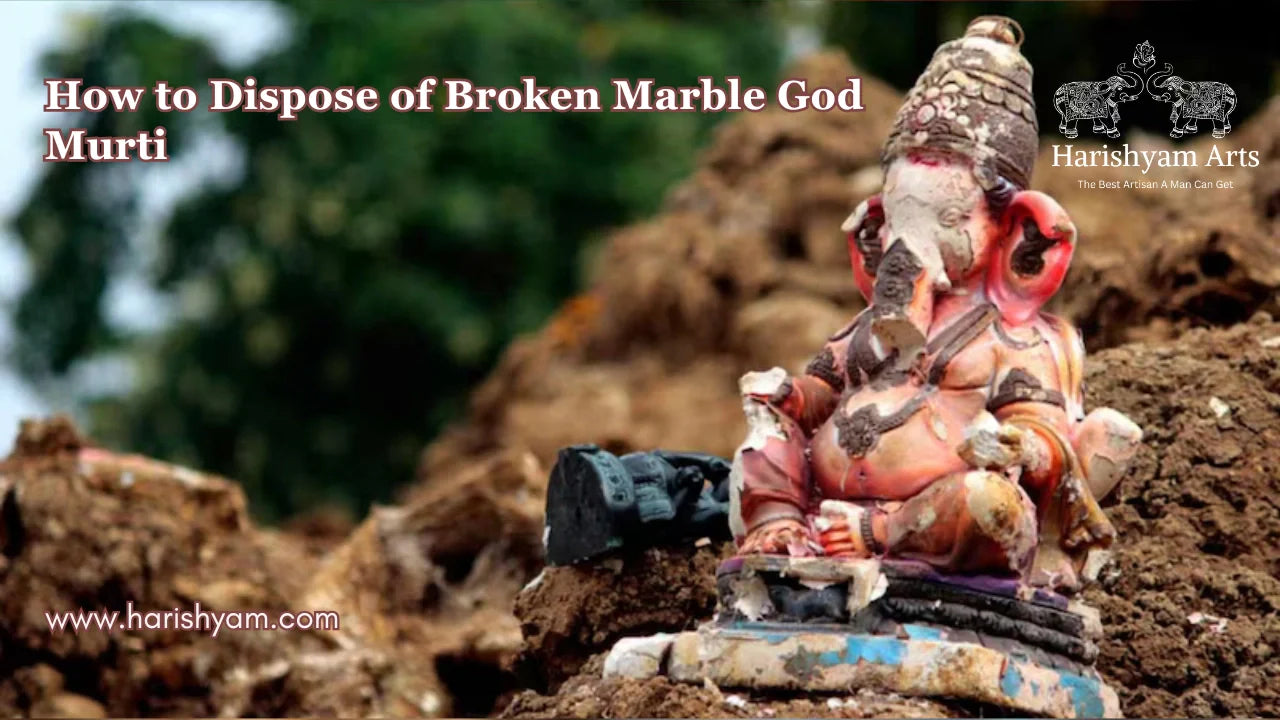
How to Dispose of Broken Marble God Murti
Lakshay Sharma | October 30, 2025
In Hindu tradition, marble murtis represent divine presence and spiritual ener...
Read More...
Wooden Statues vs Marble Statues: Which One Should You Choose?
Lakshay Sharma | October 29, 2025
When it comes to decorating your home or creating a sacred space, choosing the...
Read More...
How a Wooden Temple Enhances Positive Energy in Your Home
Lakshay Sharma | October 28, 2025
A home temple isn’t just a decorative corner — it’s the spiritual...
Read More...
Why Lord Krishna is Worshipped in Different Forms Across India
Lakshay Sharma | October 27, 2025
Lord Krishna — the eighth incarnation of Lord Vishnu — is one of the most belo...
Read More...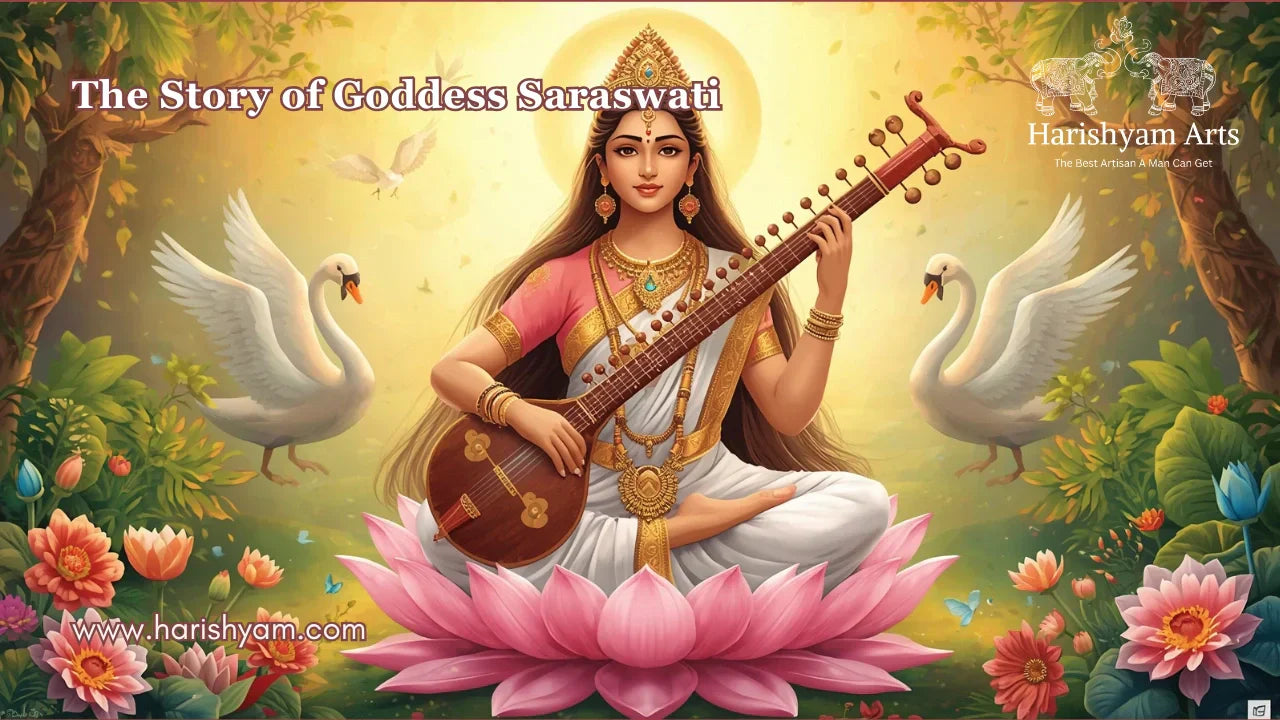
The Story of Goddess Saraswati: The Embodiment of Wisdom and Knowledge
Lakshay Sharma | October 26, 2025
Among the many deities of the Hindu pantheon, Maa Saraswati Read More...

Top Reasons to Choose Brass Statues for Home Décor and Spiritual Spaces
Lakshay Sharma | October 25, 2025
Home décor today is not only about beauty—it’s about creating a peaceful and m...
Read More...
How long do Corian temples last?
Lakshay Sharma | October 24, 2025
Choosing the right material for a temple at home is important for both aesthet...
Read More...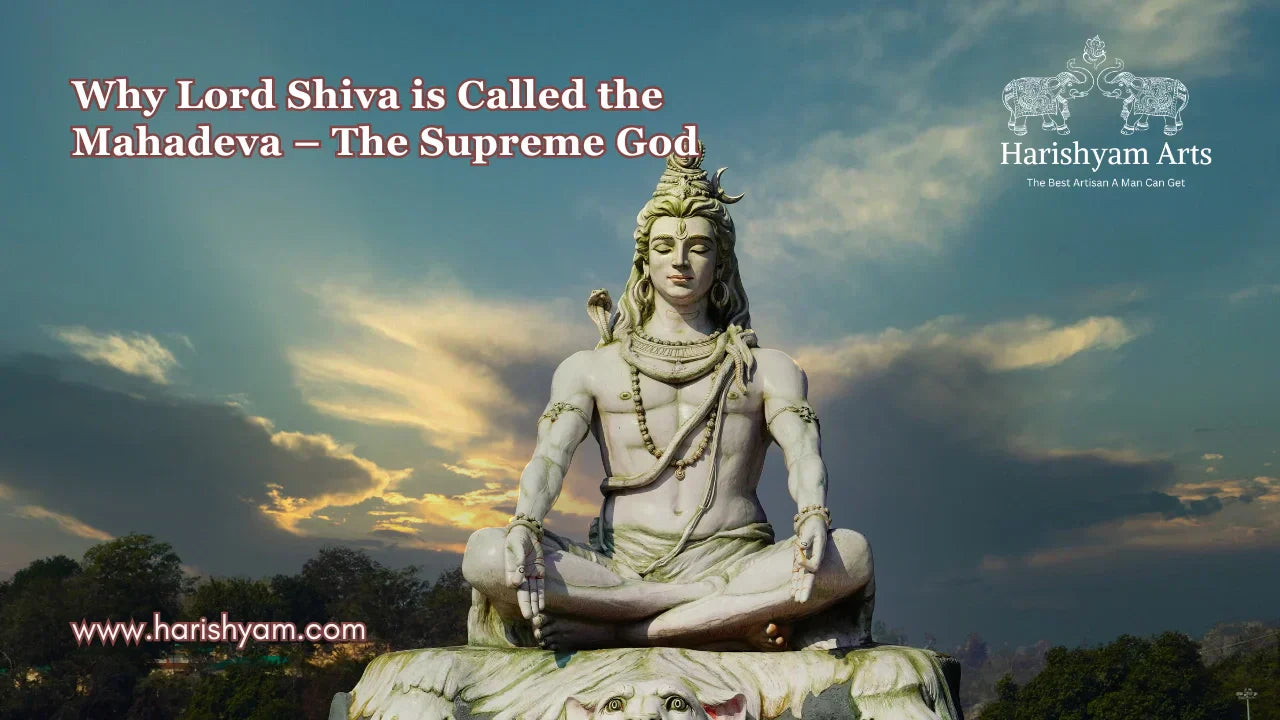
Why Lord Shiva is Called the Mahadeva – The Supreme God
Lakshay Sharma | October 23, 2025
Hinduism, one of the world’s oldest religions, has a rich pantheon of deities,...
Read More...
Why Corian Temples Are Becoming Popular in Contemporary Homes
Lakshay Sharma | October 22, 2025
In today’s modern homes, interior décor blends tradition with contemporary sty...
Read More...
Dome or No Dome? Choosing the Right Design for Your Home Temple
Lakshay Sharma | October 21, 2025
Creating a sacred space at home is a spiritual investment, and the design of y...
Read More...
Traditional vs Modern Wooden Temples: Which Suits Your Space?
Lakshay Sharma | October 20, 2025
Creating a sacred space in your home is more than just interior décor — it’s a...
Read More...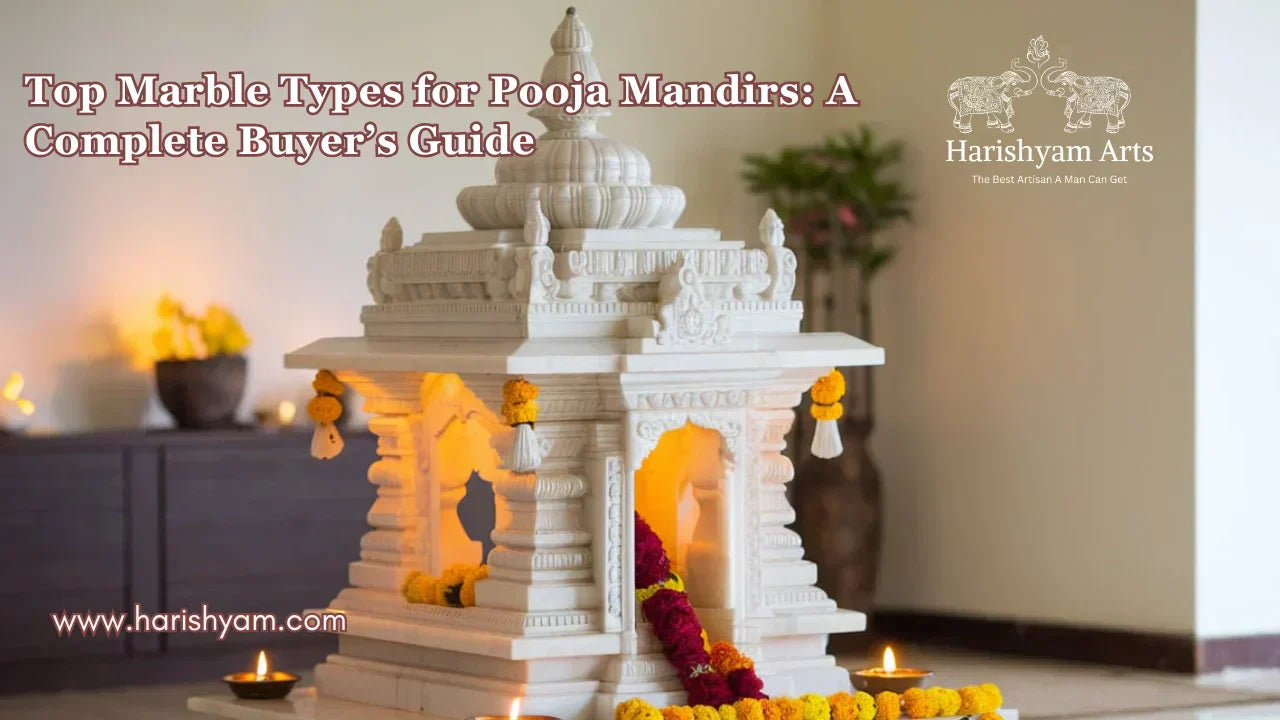
Top Marble Types for Pooja Mandirs: A Complete Buyer’s Guide
Lakshay Sharma | October 19, 2025
A Pooja Mandir is more than just furniture; it is th...
Read More...
The Different Forms of Shiva Statues and their Symbolism
Lakshay Sharma | October 18, 2025
Introduction to the God Shiva Statue
Lord Shiv...
Read More...
Guide to Choosing the Perfect Wooden Statue for Home and Office Décor
Lakshay Sharma | October 17, 2025
Wooden statues are more than decorative pieces—they are timeless symbols of ar...
Read More...
Understanding the Difference Between Handmade and Machine-Made Brass Statues
Lakshay Sharma | October 16, 2025
Brass statues have been a cornerstone of spiritual and decorative art for cent...
Read More...
Where to Buy Custom Marble Statue Online? A Complete Guide
Lakshay Sharma | October 15, 2025
Marble statues have always held a special place in Indian homes and temples. T...
Read More...
Mistakes You Shouldn’t Make When Purchasing a Home Temple Online
Lakshay Sharma | October 14, 2025
Buying a home temple online can be an exciting experience — especially with so...
Read More...
Mistakes You Shouldn’t Make When Purchasing a Home Temple Online
Lakshay Sharma | October 14, 2025
Buying a home temple online can be an exciting experience — especially with so...
Read More...
How to Clean and Maintain Wooden Statues at Home
Lakshay Sharma | October 13, 2025
Wooden statues add elegance, tradition, and warmth to any home. From intricate...
Read More...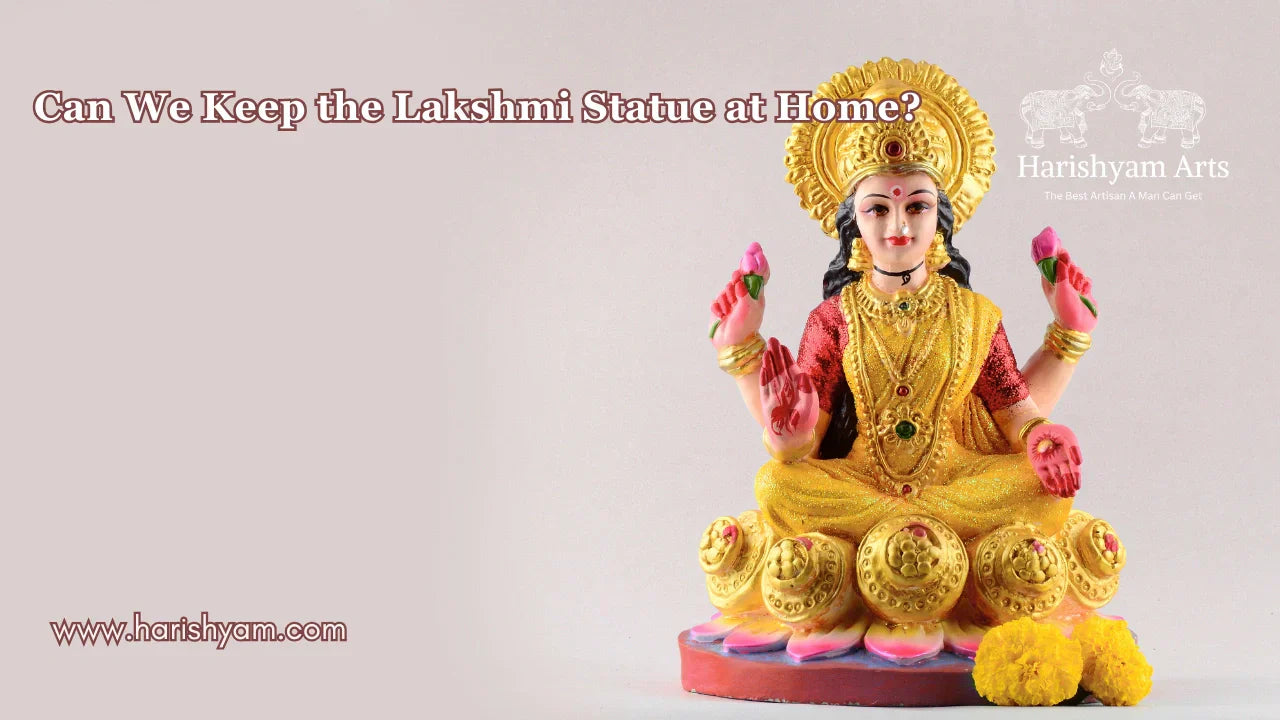
Can We Keep the Lakshmi Statue at Home?
Lakshay Sharma | October 13, 2025
In Hindu tradition, Goddess Lakshmi is worshipped as the divine force of wealt...
Read More...
How to Clean Brass Statues at Home?
Lakshay Sharma | October 12, 2025
Brass statues add a touch of elegance and spirituality to any home. At Harishy...
Read More...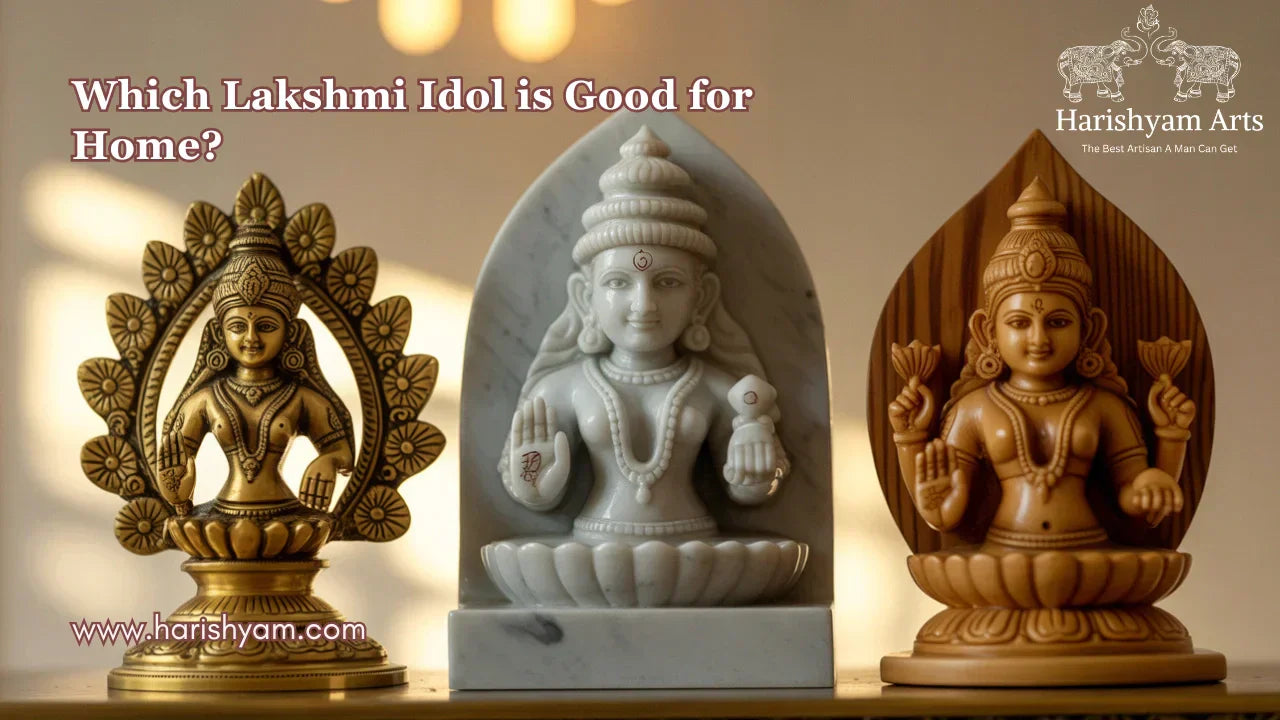
Which Lakshmi Idol is Good for Home? Types, Materials, and Significance
Lakshay Sharma | October 11, 2025
Goddess Lakshmi, the divine symbol of wealth, prosperity, and abu...
Read More...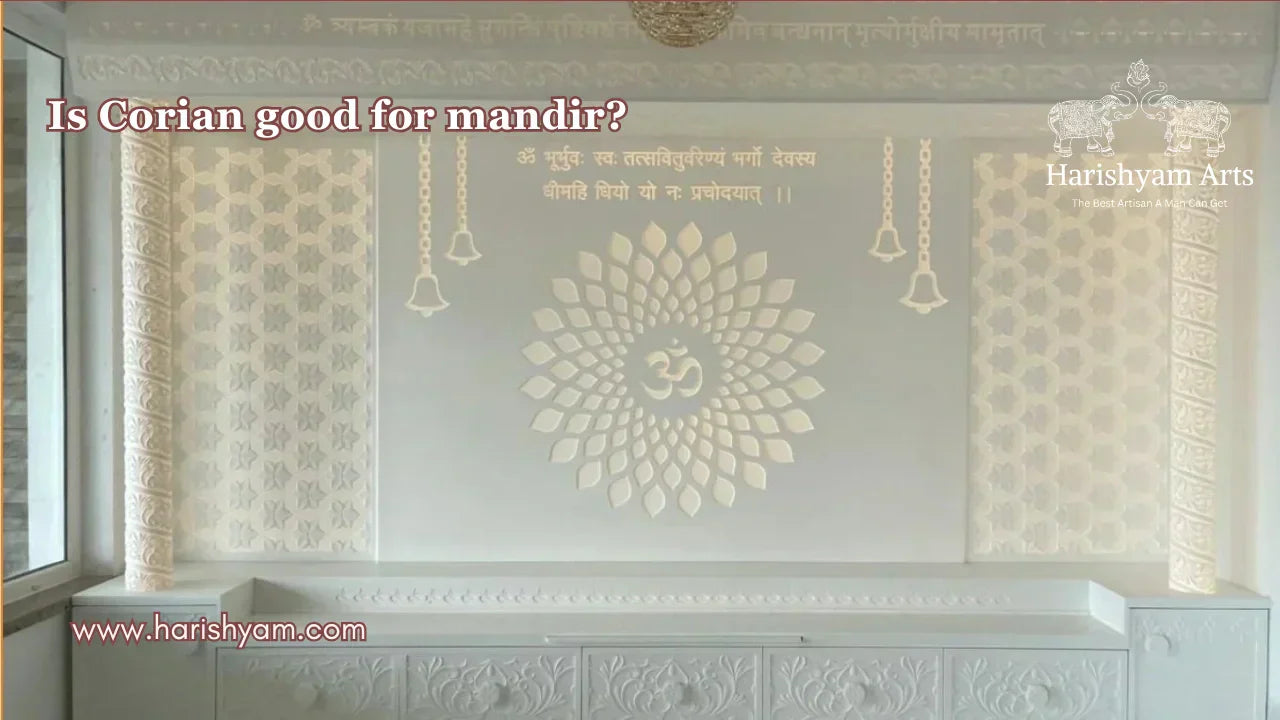
Is Corian Good for Mandir? A Complete Guide
Lakshay Sharma | October 10, 2025
When it comes to designing a home mandir, choosing t...
Read More...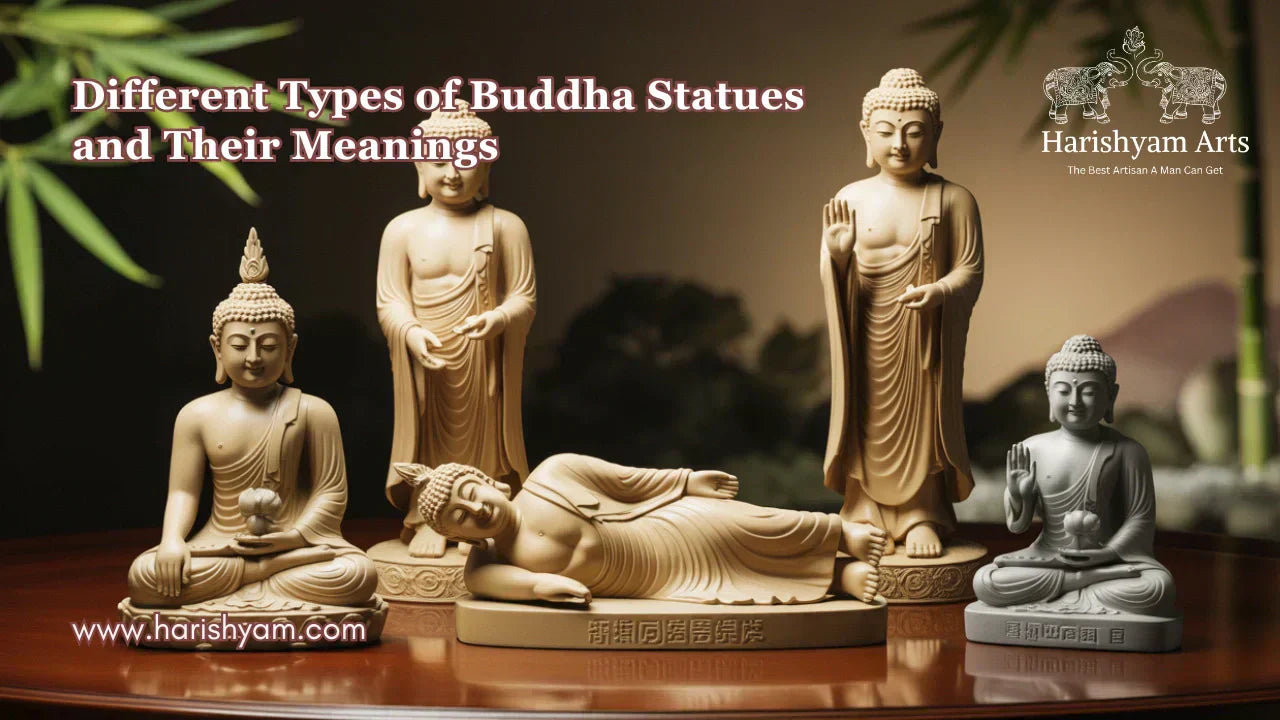
Different Types of Buddha Statues and Their Meanings
Lakshay Sharma | October 09, 2025
Buddha statues are more than just beautiful decorative pieces—they symbolize s...
Read More...
How to Identify a Real Habur Stone? A Complete Guide
Lakshay Sharma | October 08, 2025
Habur stone, known for its mysterious ability to turn milk into curd naturally...
Read More...



